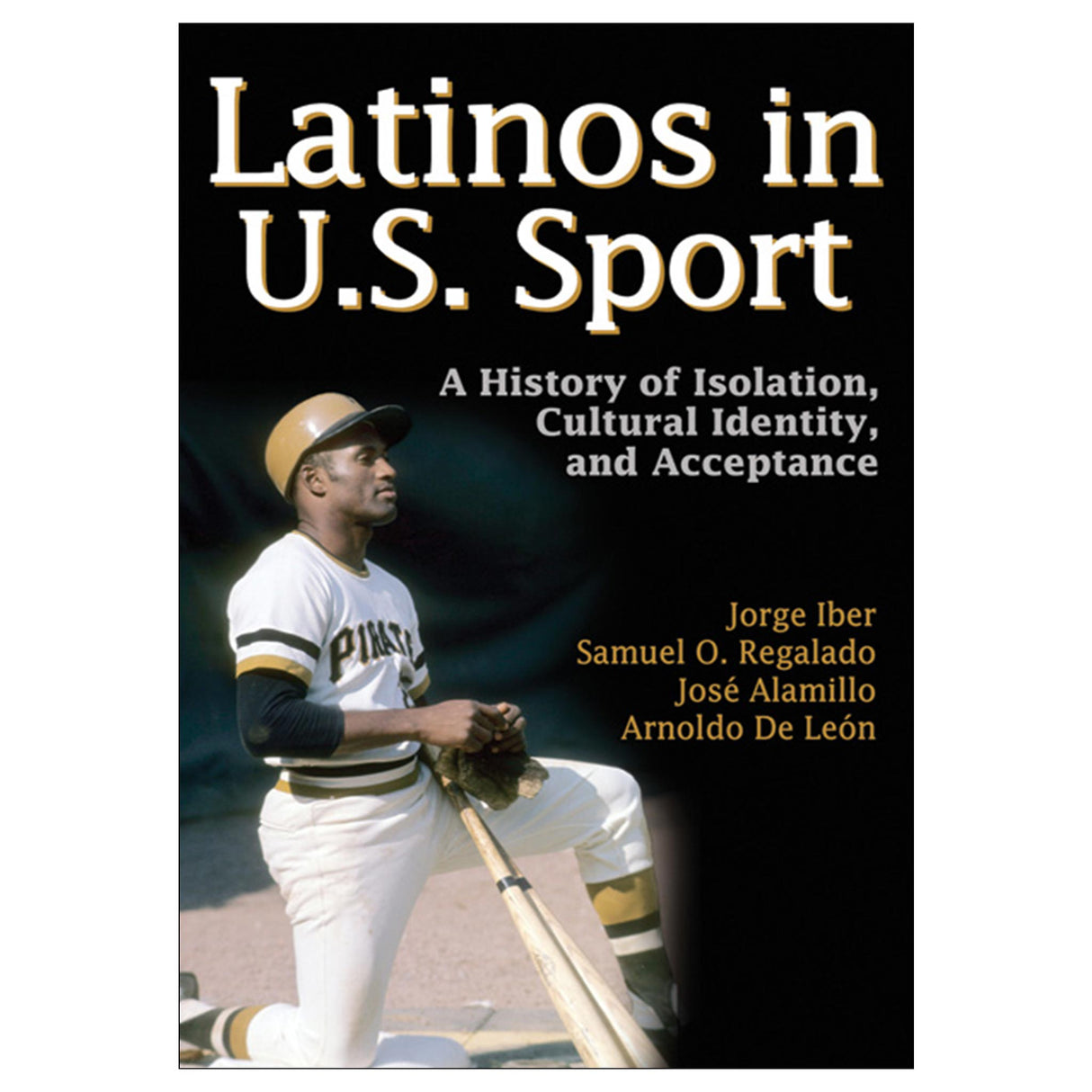Latinos in U.S Sport PDF
A History of Isolation, Cultural Identity, and Acceptance
$77.95 CAD
Access Duration: 10 Years
Latinos in U.S. Sport: A History of Isolation, Cultural Identity, and Acceptance is the first comprehensive exploration of Latino culture and its relationship to sport in what is now the United States. Spanning a period of 500 years from the 16th century to the present and discussing a wide range of Latino communities, regions, and sports, Latinos in U.S. Sport offers an accessible examination of the Latino sporting experience in the United States by covering topics ranging from cultural issues to economics.
Using newspaper accounts and primary sources as well as dissertations and scholarly articles from history, education, sport business, and other disciplines, the authors provide a thorough and enlightening account of this population’s role in U.S. sport history. The text details the experiences of Mexican Americans, Puerto Ricans, Cubans, Dominicans, and others as it chronicles the community, school-based, and professional influences of Latinos within a variety of sports and sport contexts. The authors discuss the evolution of sport, games, and physical activity. They also examine the shifting perceptions both within and outside of the Latino community and the outcomes of these changes.
The timeline within the text gives readers a visual presentation of the key events and figures in this culture’s history. The book highlights Latino athletes and teams who overcame great odds to succeed at the local, high school, collegiate, and professional levels and details the early participation of such individuals in international athletic competitions, such as the Olympics and Pan-American Games. In addition to examining well-known figures such as Nancy López, Chi Chi Rodríguez, Pancho González, and Roberto Clemente, special Unknown Heroes sidebars introduce readers to many lesser-known but influential athletes and coaches.
Latinos in U.S. Sport begins by detailing the games and diversions particular to the Spanish conquistadors, various Native American groups, and the integrated culture of the mestizo, and it traces the ways in which American influence moved into these regions. Moving ahead to the late 19th and early 20th centuries, the text describes how European Americans used baseball as part of their attempt to bring “civilization” to the areas of the Caribbean and the Southwest. The text also discusses how the success of Cubans and other Latin Americans within Major League and Negro League Baseball helped to challenge the perception of Spanish speakers among the broader U.S. population. The final section of the book discusses the increasing presence of Latinos in all fields of sport competition, their growing presence in management and ownership of sport franchises, and their increasing economic power as consumers of athletic events.Latinos in U.S. Sport presents a long-overdue look at the history of Latino participation in multiple facets of American sport and provides a balanced and more complete history of the contribution of Spanish-speaking people to the history of U.S. sport. The text aims to generate discussion and inspire further recognition of the influence of Latinos in the U.S. sport world.
Chapter 1. Games of Spaniards, Pre-Columbians, and the Peoples of New Spain, 1500-1821
Los Españoles (the Spaniards) and Sports
Sports, Games, and Entertainment Activities of Pre-Columbian Peoples
Games and Sports in New Spain, 1521-1821
Conclusion
Chapter 2. Games Mexicans Played, 1821-1880s
19th-Century Borderlands
Games and Sports in Mexico’s Far North, 1821-1848
Games and Sports in the U.S. Southwest, 1848-1880s
Into the Modern Sports Era
Conclusion
Chapter 3. Getting in the Game: Latino-Style American Sport, 1880s-1930
Athletic Ability of Latinos
Baseball Craze
Rise of American Football
Marginal Sport Claiming Its Place in Barrio Life
Dribble Diversion
Boxing Ring as a Place for Creating Tough Hombres
Other Sports
Conclusion
Chapter 4. Sports and Community Life in the Great Depression and World War II, 1930-1950
Athletic Abilities of Latinos: Beginning of a More Realistic Assessment?
Lots of Energy to Play Ball
Football
Pride and Identification Through Soccer
Basketball in the Barrios and in Big Tournaments
Boxing and Community
Track and Field: An Athletic Challenge
Burgeoning Latino Presence in Golf
Early Years of Latino Tennis
Conclusion
Chapter 5. Expanding Opportunities From High Schools to the National Stage, 1950-1965
Key Historical Trend
Baseball
Football
Basketball
Boxing
Tennis
Running
Golf’s Presence in the Barrio
Horse Racing
Conclusion
Chapter 6. Latinos and Sport During an Era of Social Activism: 1965-1980
Activism and Stardom on the Baseball Diamond
Football
Hoops and Ethnic Pride During the Chicano Era
Soccer and Recreational Independence
Boxing as an Outlet for Teenage Frustration
Does Playing Golf Make One Less Latino?
Conclusion
Chapter 7. Becoming Part of the Mainstream as Consumers, Performers, and Leaders, 1980-2010
Four Illustrative Stories
Key Themes
Burgeoning Presence on the Baseball Diamond and the Front Office
Spanish Surnames More Common on the Gridiron
Basketball at the Heart of the Barrio and Beyond
Latinos and Latinas as Part of the Tennis Boom
Soccer (Fútbol): Cultural Spaces in Unlikely Places
Continuing Latinization of the Boxing Ring
Latinos as Consumers
Other Sports
Conclusion





